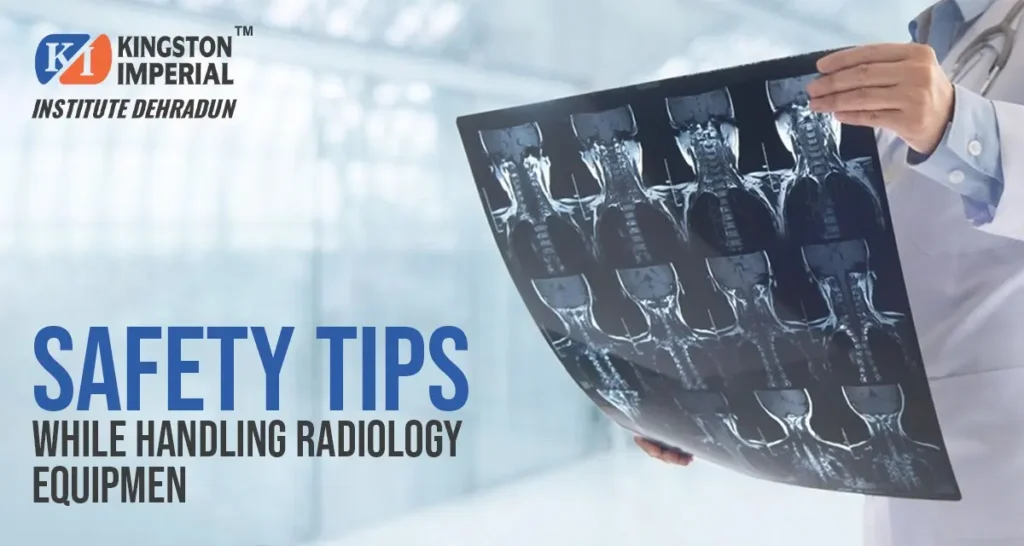
Radiology plays a significant role in the medical world. With the aid of radiology equipment such as X-rays, CT scans & MRI machines, doctors are able to look inside the body. Although this equipment saves lives by identifying issues early enough, it emits radiation which can be dangerous if not used carefully. This is why safety precautions have to be learned & adhered to by anyone who works with radiology equipment.
Whether you’re a radiologist, technician or student, knowing the radiology equipment safety tips is not just part of the job; it’s a responsibility. Radiation, when used carelessly, can harm both the person operating the machine & the patient. But the good news is, with the right training & some simple precautions, working with these machines can be completely safe. Let’s look at the most important tips that everyone should follow.
• Always Wear Protective Gear
One of the most fundamental yet necessary radiology equipment safety tips is to always wear protective gear. These include lead aprons, lead gloves, thyroid shields & protective eyewear. These specially designed materials filter out harmful rays & lower radiation exposure to your body.
Even when taking a snapshot, do not skip the gear. Long exposures may add up over time & lead to severe health issues. Also, protective gear ought to be properly kept & inspected frequently for any cracks or damage to provide maximum protection with every usage.
• Keep Proper Distance & Use Shielding
When working with machines such as X-rays or CT scanners, distance becomes your friend. The further away you are from the radiation source, the less exposure you will receive. If at all possible, leave the room or stand behind a lead shield when the picture is being obtained.
Hospitals & laboratories usually have control rooms separated by lead walls or glass. It’s a good practice to operate machines from such protected areas. In case staying inside is unavoidable, use portable shields. Adhering to this radiology equipment safety tip will significantly reduce your risk of unnecessary exposure.
• Check & Maintain Equipment Regularly
Another significant aspect of safe handling of radiology machines is regular maintenance. Deteriorated or outdated machines may leak radiation, provide faulty reports or fail, compromising both the operator & patient safety.
As a result, technicians must always ensure the machines are checked & maintained at intervals. Be aware of unusual sounds, screen errors or overheating. Report any issues to the maintenance department immediately. Maintaining the machines in proper condition guarantees proper imaging as well as maximum safety.
• Limit Exposure Time
Exposure to radiation is proportionate to the amount of time you spend in front of an operating machine. So one of the smartest things you can do is minimize the time spent within imaging processes. Set up everything ahead of time, get the patient ready, set the machine controls & get people in place before beginning.
By reducing the time the machine is on & running, you not only keep yourself safe but also contribute to faster & more effective imaging. Always adhere to the ALARA principle which is “As Low As Reasonably Achievable” to manage radiation doses wisely.
• Follow All Radiation Warning Signs & Regulations
Radiology rooms typically have warning notices, symbols of restricted access & messages. These are not just for decoration but they are a crucial component of radiation protection guidelines. Never disregard them.
Also, do not let unauthorized individuals such as visitors or non-trained personnel into active imaging rooms. Always double-check safety settings prior to starting any scan. It’s these small habits that avoid large accidents & make the workplace safe for everyone.
• Wear Personal Dosimeters & Monitor Exposure
People working around radiation regularly are often given a dosimeter badge. This tiny device tracks how much radiation you are exposed to over time. Wearing it at all times while working with radiology machines is crucial.
At the end of each cycle (typically monthly), these readings are monitored to make sure your exposure levels remain within safe parameters. In case levels get too high, you may have to take a break or change jobs for a while. This easy monitoring process is an important factor in long-term health protection.
Final Thoughts
Working with radiology equipment isn’t dangerous when it’s done correctly; it’s safe, efficient & an important part of modern medicine. But it requires knowledge & discipline. Whether you’re a novice or seasoned technician, these radiology equipment safety tips guard both you & your patients against unnecessary harm.
Institutions such as KIIMS make sure their students are trained on the most modern machinery & adhere to international safety standards from the beginning. Proper theory & practical safety training enable the student to create a career that’s not only successful but also ethical.

